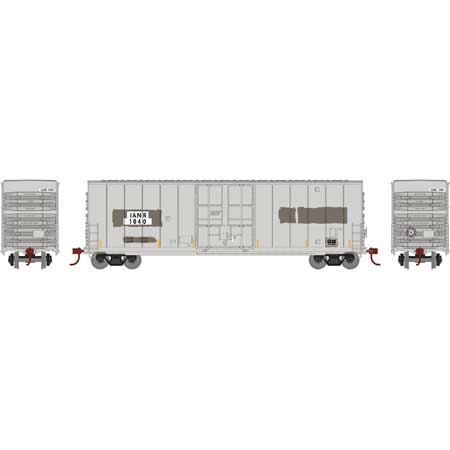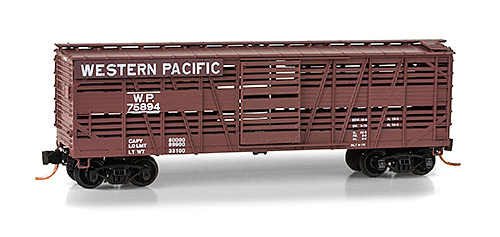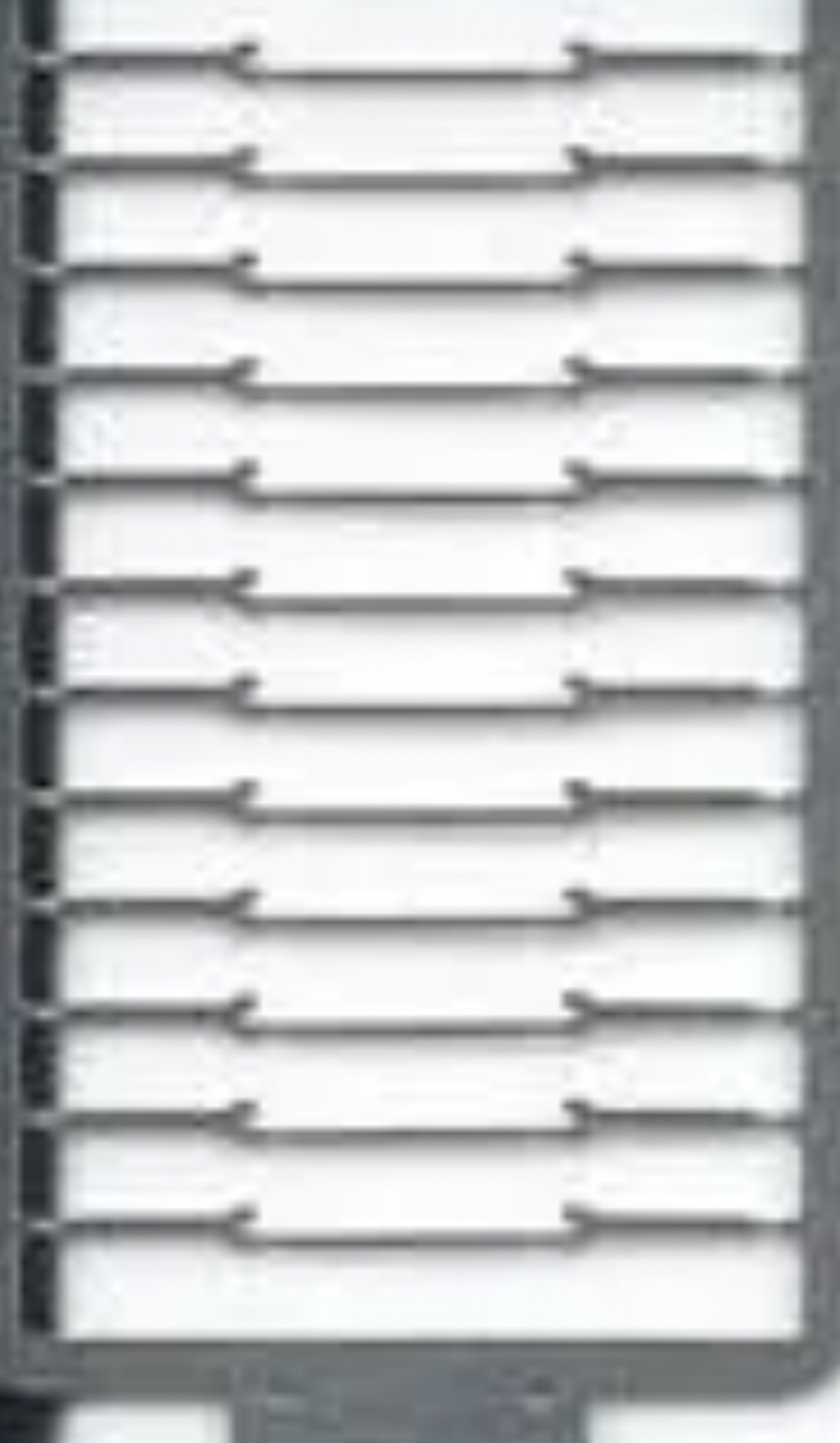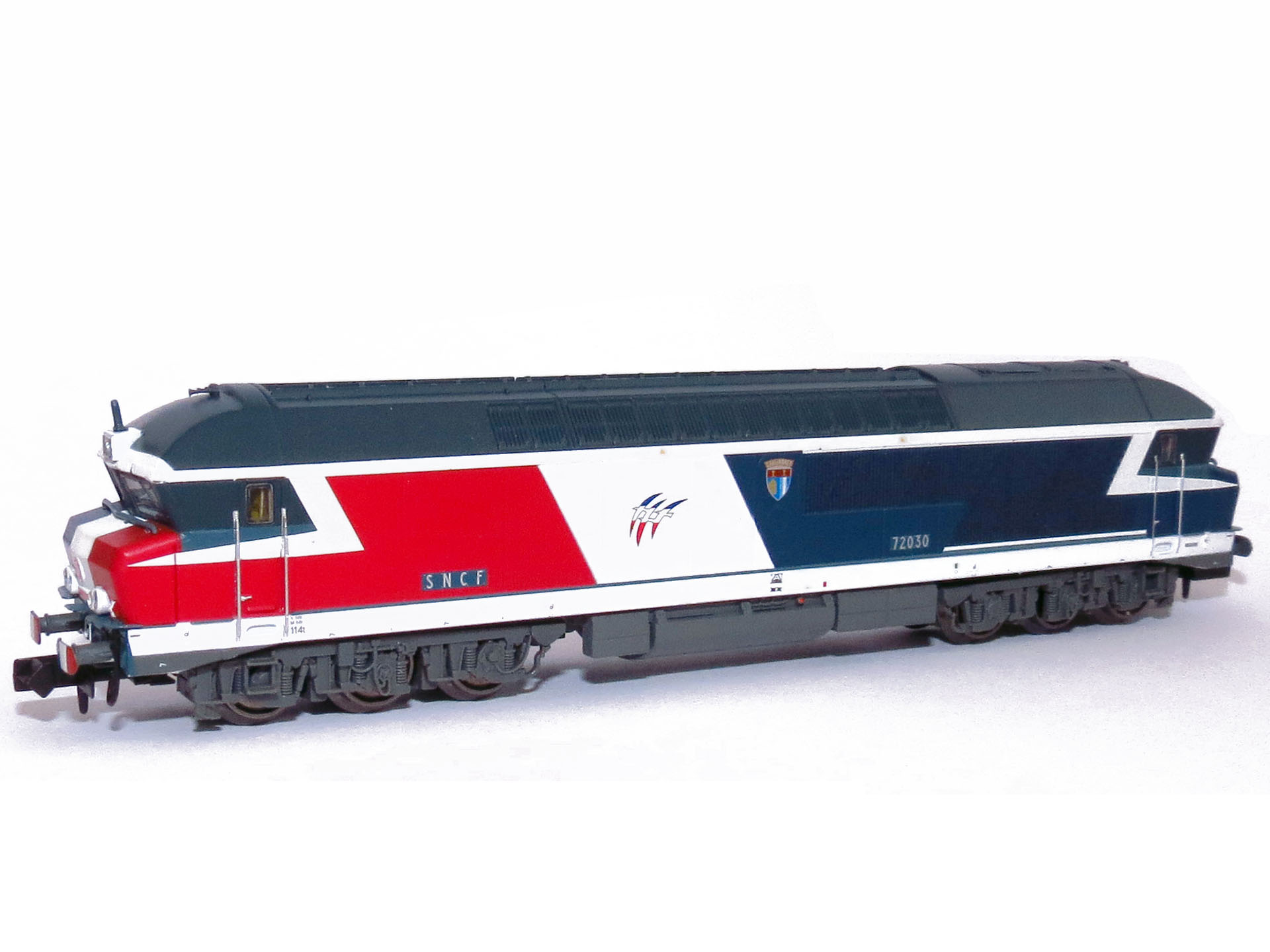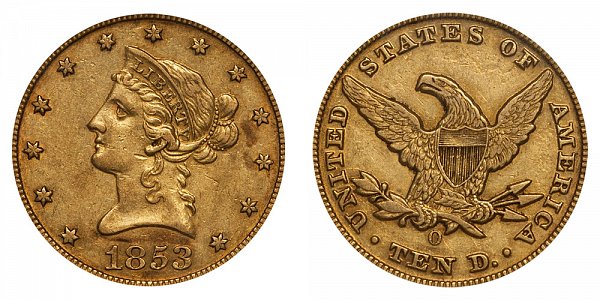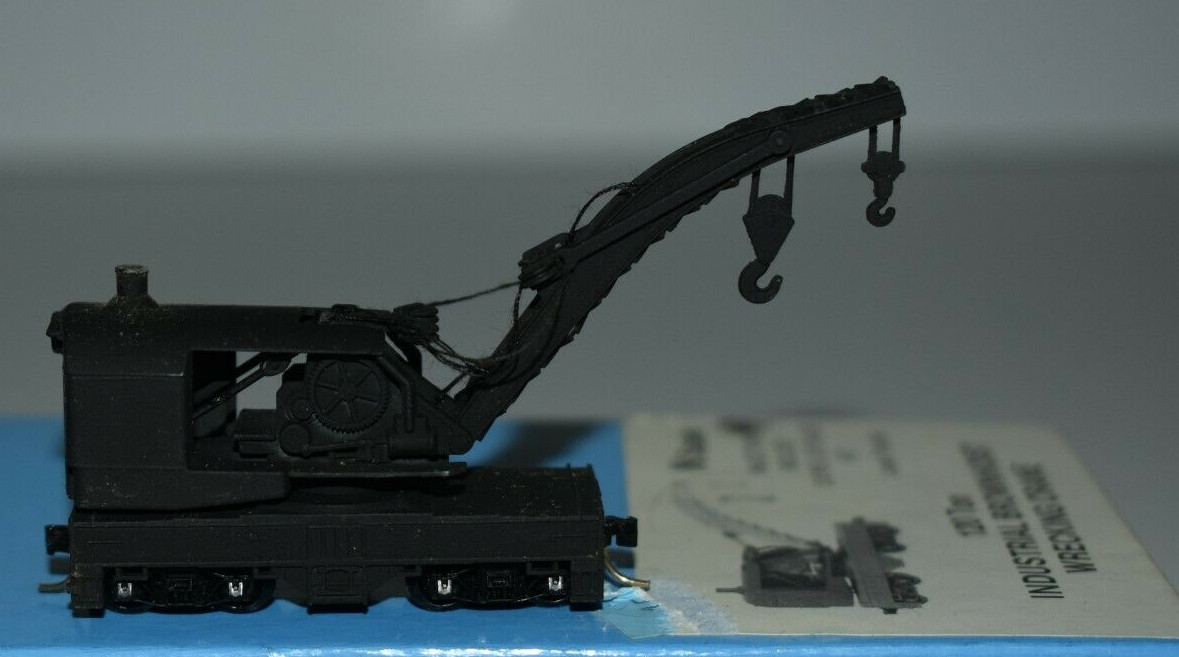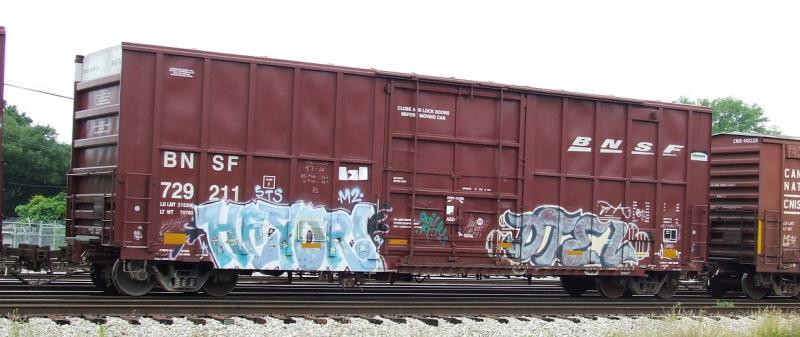Model Information: This MDC Roundhouse body style models a 50 Foot Hi-Cube Boxcar with a single plug door, riveted sides and no roofwalk. the model is reasonably close in detail to a typical Plate-F prototype boxcar such as is made by Greenbrier. The molds were acquired by Athearn/Horizon Hobbies in 2006 and are being re-released with upgrades (body-mount couplers and metal wheelsets) as of late (2017).
Prototype History: While the 40-foot boxcar was a standard design, and it did come in different setups depending on the type of freight being transported, it was not large enough for efficient mass commodity transportation. The 50-foot boxcar made its first appearance in the 1930s and steadily grew in popularity over the years, which further improved redundancies by allowing for even more space within a given car. Today, the 50-footer remains the common boxcar size. After the second world war ended, and steel became once again readily available, steel became the go-to choice for construction of boxcars. Pullman Standard and ACF were some of the most prolific builders of these cars.
In the 1960s, the flush, "plug" style sliding door was introduced as an option that provides a larger door to ease loading and unloading of certain commodities. The tight-fitting doors are better insulated and allow a car's interior to be maintained at a more even temperature.
The 50 foot hi-cube boxcar fleet is similar to a 50 foot standard car with an additional 2 feet of interior height. This is known as a "Plate F" boxcar. 50 foot Hi-Cube boxcars typically have a load capacity of 100 tons and are equipped with cushion underframes and plug doors. These cars are used primarily in rolled paper service as the extra height is needed to accommodate the larger rolls that are now commonplace. They can also be used for similar commodities handled in other 50’ or 60’ boxcars.
In the 1960s, the flush, "plug" style sliding door was introduced as an option that provides a larger door to ease loading and unloading of certain commodities. The tight-fitting doors are better insulated and allow a car's interior to be maintained at a more even temperature.
The 50 foot hi-cube boxcar fleet is similar to a 50 foot standard car with an additional 2 feet of interior height. This is known as a "Plate F" boxcar. 50 foot Hi-Cube boxcars typically have a load capacity of 100 tons and are equipped with cushion underframes and plug doors. These cars are used primarily in rolled paper service as the extra height is needed to accommodate the larger rolls that are now commonplace. They can also be used for similar commodities handled in other 50’ or 60’ boxcars.
Road Name History: 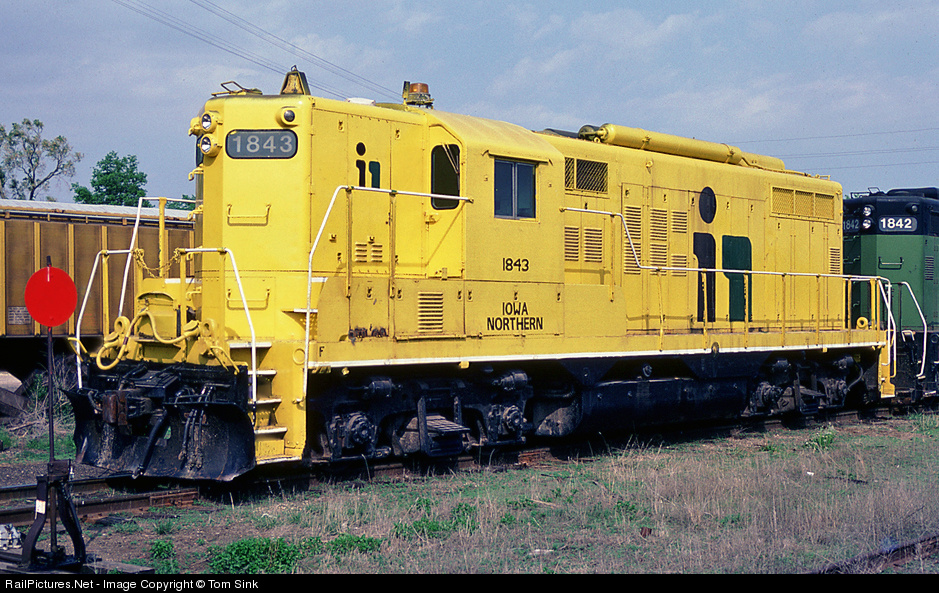 The Iowa Northern began in 1981 to operate a former Rock Island line between Cedar Rapids and Vinton, and a line from Shell Rock to Nora Springs. The following year, they picked up the line that connected these two separate segments. This brought the system up to 163 miles, all in the state of Iowa. Their main shops are at Bryant Yard in Waterloo. The company was originally owned by a group of shippers on the line but they sold it to the Iron Road Railways group (owners of Bangor & Aroostook, Canadian-American and others) in 1994. In 2002, following the collapse of Iron Road, the company was picked up by Daniel Sabin.
The Iowa Northern began in 1981 to operate a former Rock Island line between Cedar Rapids and Vinton, and a line from Shell Rock to Nora Springs. The following year, they picked up the line that connected these two separate segments. This brought the system up to 163 miles, all in the state of Iowa. Their main shops are at Bryant Yard in Waterloo. The company was originally owned by a group of shippers on the line but they sold it to the Iron Road Railways group (owners of Bangor & Aroostook, Canadian-American and others) in 1994. In 2002, following the collapse of Iron Road, the company was picked up by Daniel Sabin.
Since the start of operations, traffic levels have risen 330% and track speed limits on the mains have been raised from 10mph to 30mph.
In 2003, Iowa Northern picked up a 23 mile segment of former Chicago Great Western route from Union Pacific between Dewar and Oelwein (the old CGW’s hub.)
IANR’s diesel fleet has changed quite a bit over the years. Here is a fairly recent roster: 5 rebuilt F40PH’s 2 MP1500D’s 2 MP2000D’s 12 GP38-2’s 6 road slugs 3 GP40-2LW’s
The rebuilt F40PH’s are former Amtrak units picked up third hand. The GP40-2LW’s are former CN wide nose units. The original yellow Iowa Northern paint scheme was a blight on the land and featured a logo that must have been designed with Play Doh.
The hideous yellow was replaced with a solid maroon with pale yellow nose stripes and a curious gray stripe about a foot above the frame. The Play Doh was replaced with a more dignified shield. This was a major improvement but the acquisition by Iron Road brought their snazzy paint scheme inspired by Canadian Pacific’s pre-1967 look. They have kept this paint scheme through the post-Iron Road era.

Since the start of operations, traffic levels have risen 330% and track speed limits on the mains have been raised from 10mph to 30mph.
In 2003, Iowa Northern picked up a 23 mile segment of former Chicago Great Western route from Union Pacific between Dewar and Oelwein (the old CGW’s hub.)
IANR’s diesel fleet has changed quite a bit over the years. Here is a fairly recent roster: 5 rebuilt F40PH’s 2 MP1500D’s 2 MP2000D’s 12 GP38-2’s 6 road slugs 3 GP40-2LW’s
The rebuilt F40PH’s are former Amtrak units picked up third hand. The GP40-2LW’s are former CN wide nose units. The original yellow Iowa Northern paint scheme was a blight on the land and featured a logo that must have been designed with Play Doh.
The hideous yellow was replaced with a solid maroon with pale yellow nose stripes and a curious gray stripe about a foot above the frame. The Play Doh was replaced with a more dignified shield. This was a major improvement but the acquisition by Iron Road brought their snazzy paint scheme inspired by Canadian Pacific’s pre-1967 look. They have kept this paint scheme through the post-Iron Road era.
Brand/Importer Information: Athearn's history began in 1938, when its founder-to-be, Irvin Athearn, started an elaborate O scale layout in his mother's house. After placing an ad selling the layout, and receiving much response to it, Irv decided that selling model railroads would be a good living. He sold train products out of his mother's house through most of the 1940s. After becoming a full-time retailer in 1946, Irv opened a separate facility in Hawthorne, California in 1948, and that same year he branched into HO scale models for the first time.
Athearn acquired the Globe Models product line and improved upon it, introducing a comprehensive array of locomotive, passenger and freight car models. Improvements included all-wheel drive and electrical contact. One innovation was the "Hi-Fi" drive mechanism, employing small rubber bands to transfer motion from the motor spindle to the axles. Another was the double-ended ring magnet motor, which permitted easy connection to all-wheel-drive assemblies. Athearn was also able to incorporate flywheels into double-ended drives.
The company produced a model of the Boston & Maine P4 class Pacific steam locomotive which incorporated a cast zinc alloy base and thermoplastic resin superstructure. It had a worm drive and all power pickup was through the bipolar trucks that carried the tender. This item was discontinued after the Wilson motor was no longer available, and was not redesigned for a more technologically advanced motor.
Athearn's car fleet included shorter-than-scale interpretations of passenger cars of Southern Pacific and Atchison, Topeka & Santa Fe Railroad prototypes. The company also offered a variety of scale-length freight cars with sprung and equalized trucks. The cars could be obtained in simple kit form, or ready-to-run in windowed display boxes. The comprehensive scope of the product line contributed to the popularity of HO as a model railroad scale, due to the ready availability of items and their low cost.
Irv Athearn died in 1991. New owners took control in 1994, but continued to follow Athearn's commitment to high-quality products at reasonable prices. Athearn was bought in 2004 by Horizon Hobby. Athearn was then moved from its facility in Compton to a new facility in Carson, California. In mid-2009, all remaining US production was moved to China and warehousing moved to parent Horizon Hobby. Sales and product development was relocated to a smaller facility in Long Beach, California.
Read more on Wikipedia and Athearn website.
Athearn acquired the Globe Models product line and improved upon it, introducing a comprehensive array of locomotive, passenger and freight car models. Improvements included all-wheel drive and electrical contact. One innovation was the "Hi-Fi" drive mechanism, employing small rubber bands to transfer motion from the motor spindle to the axles. Another was the double-ended ring magnet motor, which permitted easy connection to all-wheel-drive assemblies. Athearn was also able to incorporate flywheels into double-ended drives.
The company produced a model of the Boston & Maine P4 class Pacific steam locomotive which incorporated a cast zinc alloy base and thermoplastic resin superstructure. It had a worm drive and all power pickup was through the bipolar trucks that carried the tender. This item was discontinued after the Wilson motor was no longer available, and was not redesigned for a more technologically advanced motor.
Athearn's car fleet included shorter-than-scale interpretations of passenger cars of Southern Pacific and Atchison, Topeka & Santa Fe Railroad prototypes. The company also offered a variety of scale-length freight cars with sprung and equalized trucks. The cars could be obtained in simple kit form, or ready-to-run in windowed display boxes. The comprehensive scope of the product line contributed to the popularity of HO as a model railroad scale, due to the ready availability of items and their low cost.
Irv Athearn died in 1991. New owners took control in 1994, but continued to follow Athearn's commitment to high-quality products at reasonable prices. Athearn was bought in 2004 by Horizon Hobby. Athearn was then moved from its facility in Compton to a new facility in Carson, California. In mid-2009, all remaining US production was moved to China and warehousing moved to parent Horizon Hobby. Sales and product development was relocated to a smaller facility in Long Beach, California.
Read more on Wikipedia and Athearn website.
Item created by: CNW400 on 2020-11-05 23:40:02
If you see errors or missing data in this entry, please feel free to log in and edit it. Anyone with a Gmail account can log in instantly.
If you see errors or missing data in this entry, please feel free to log in and edit it. Anyone with a Gmail account can log in instantly.


